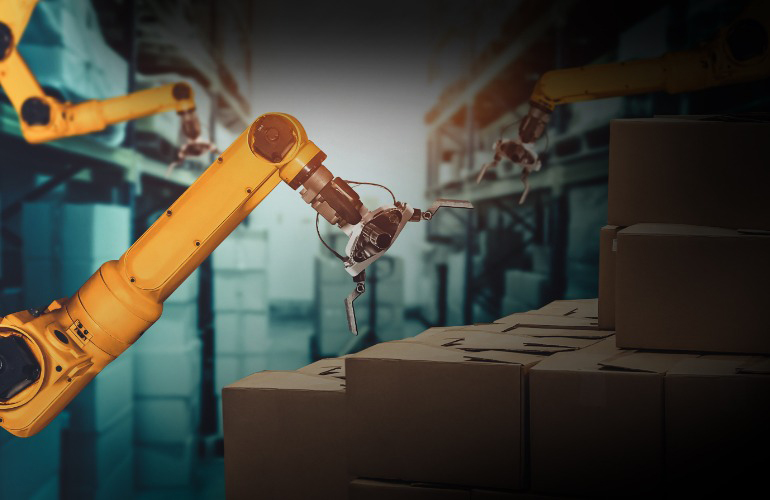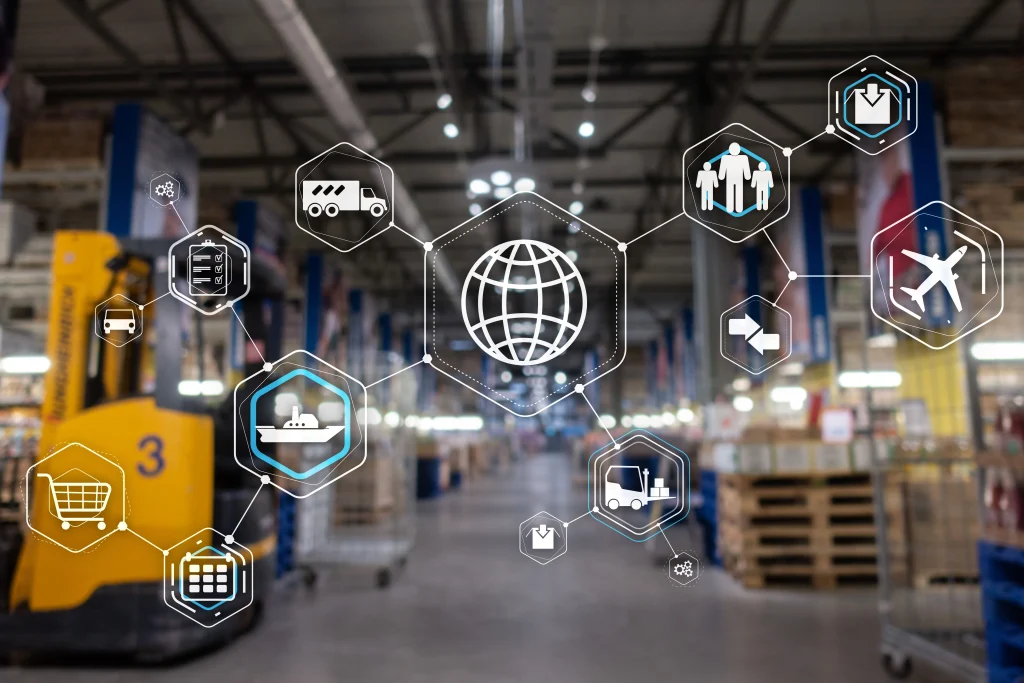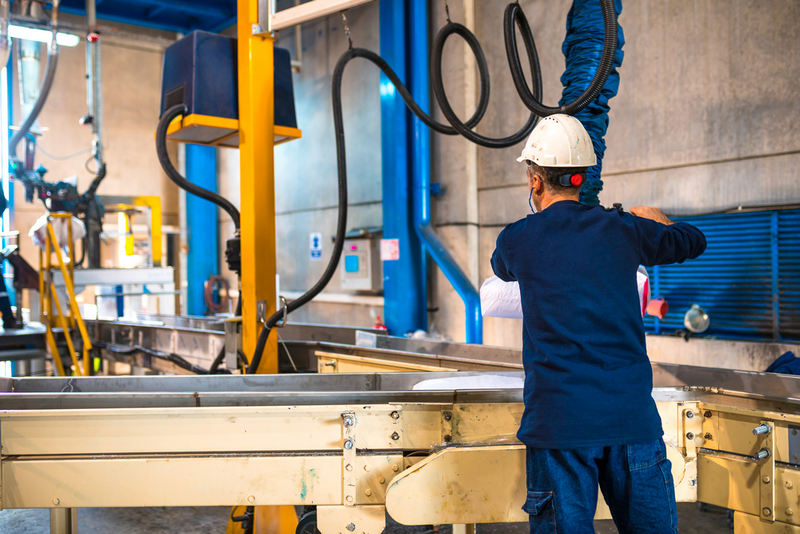Innovative machines that have redefined the way materials are delivered in industrial establishments include automated forklifts, which are also referred to as autonomous forklifts. Intelligent machines will be equipped with modern sensors, cameras and software that allow them to follow their routes in warehouses, pick up and carry loads of various types and sizes securely and effectively while working without supervision. In recent years, automated forklifts have become a vital component of many modern industrial facilities, improving productivity, efficiency, and safety in material handling operations. This essay will explore the benefits of automated forklifts in detail, discussing how they have transformed the world of industrial automation and what we can expect from them in the future.
What is an automatic forklift?
An automatic forklift is a type of material handling equipment that can operate without human intervention. It uses various sensors and technologies to navigate and carry out tasks such as transporting pallets or other heavy loads within a warehouse or distribution center. These forklifts are often used in industrial settings where repetitive tasks need to be performed quickly and efficiently. They can improve productivity, reduce labor costs, and increase safety by eliminating the need for human operators.
What is the difference between an automated forklift and manual ones?
The main difference between an automated forklift and a manual forklift is that the automated forklift operates without direct human control, while a manual forklift requires an operator to manually control its movements.
An automated forklift, also known as an AGV (Automated Guided Vehicle), follows pre-programmed instructions to navigate around a warehouse or other storage facility. These instructions are typically stored in a computer system and can be customized to suit the specific needs of the facility. Automated forklifts use sensors and cameras to detect obstacles and ensure safety while navigating through the space. They typically require less maintenance than manual forklifts and can perform repetitive tasks with greater accuracy and efficiency.
In contrast, a manual forklift requires a trained operator who controls the movement of the vehicle using a steering wheel, pedals, and levers. Manual forklifts have a lower upfront cost than automated forklifts but require ongoing maintenance and fuel costs. Additionally, they may be slower and less efficient at performing repetitive tasks compared to their automated counterparts.
Overall, the choice between an automated forklift and a manual forklift depends on the specific needs and budget of the facility.
How do autonomous forklifts work? [1]
Automated forklifts are used for loading and unloading equipment throughout the site on predefined, virtual routes or paths. On the basis of the navigation software supplied by the vehicle, these routes shall be defined. This software also contains special activities that take place at certain points on a route, such as stopping and lowering wheels of vehicles for collecting or dropping parcels.
The operation of an autonomous forklift around the site is influenced by three key factors. The vehicle must have the following information:
Where it is (requiring accurate positioning/localization)
Where to go (routes) and what to do when it gets there (actions)
How to get there (control)
Different automated forklift suppliers calculate their vehicles’ positions in different ways. The most common approaches include:
Laser triangulation (also called laser navigation or laser guidance)
Vision guidance (also called optical navigation)
Natural navigation (also called free navigation or SLAM navigation)
Where I am going (and what should I do when I get there)?
Once the System determines the position of the forklift, the vehicle may drive on a defined path or perform specified actions at predetermined points. This programming will take place in the vehicle’s configuration software, like ANT lab and usually performed by an installer.
How do I get there?
You have to move the vehicle with due care in terms of speed, trajectory and so on. An efficient and easy way to set up the ANT control system can be found here. Only the top speed of the vehicle needs to be specified by the integrator. Automatic speed calculations shall be performed at each turning and so forth with a view to maximize the vehicle’s arrival time, while also ensuring that its cargo is appropriately handled.
Types of automated forklift [2]
Automated Pallet Mover
The type of robot forklift intended to carry palletized loads in manufacturing facilities is called a PalletMover AGV, which also happens to be referred to as Forkovers and simply an Automated PalletJack. A conventional pallet jack is the inspiration for this solution. This AGV application allows limited vertical movement of the load, reaching pallets on racks or shelves at low height or in floor-to-floor operations. The transport capacity of an automatic pallet jack may range from less than one hundred kilograms up to several tones.
Automated pallet movers are the “smallest” of the unmanned forklift category. Automated Pallet Movers has stabilizers located beneath the forks. The stabilizers allow reduced AGV dimensions, weight, and a tight turning radius, ensuring great maneuverability.
Counterbalanced Robotic Forklift
A counterbalanced AGV lift truck is a lift truck that counterbalances the weight of the load with the weight, usually cast iron or a battery, in the rear of the vehicle. It is used whenever it is not possible to use fork-over AGVs and whenever is needed high payload and stacking height capacity.
Straddle Forklift (outrigger AGV)
For transporting goods in large and high warehouse, VNAs are the most efficient AGV. They are very expensive and performant vehicles that justifies the investment if they do their favourite task… moving material in racks. I wrote about the VNA AGV in this article. Don’t miss it, I assure you.
AGV Reach truck
Robot forklifts designed to work at narrow aisle storage areas are AGV Reach trucks. There are two outer legs that distribute the weight of the load. The mast increases vehicle maneuverability by widening the forks beyond the footprint of the vehicle. Reach truck AGVs may be able to retrieve and carry a load outside of its vehicle’s footprint. Some of main advantages of the reach truck AGV is the performant lifting speed and limited footprint.
ops, and sea and air ports
Ro backer
Smart Robot for carrying of heavy LOADS
While the products mentioned earlier are strong contenders, Robacker stands out in certain areas it is superior to others as follow:
This smart robot can carry and transport super heavy things, quickly and precisely, and it is controlled manually and automatically through a special program. The height of the robot is adjustable, and it can move in transverse and longitudinal directions and rotates 360 degrees. It can carry cargo and move heavy objects in warehouses, car shops, sea, and airports
Features
Robacker can carry heavy loads at any level. Robacker is a modular robot which means this robot can be connected automatically to carry very heavy and big loads
transportation robot that has an ultra-light body, and four motors and wheels which are intelligently controlled and perform both linear and angular rotation torsion is produced by Robacker Company. The level this robot can be reduced to go under objects and lift them.
WHY SHOULD CUSTOMERS BUY THIS ROBOT?
The smart control system of this device can give a special ability to use this robot in different situations. It can perform all directions of movement at the same time, lift a high load in a balanced way and carry objects a maximum of 40 km/hr. The wheels of this robot simultaneously perform the transverse direction, with the capacity of carrying several tons of load. This robot can lift and heavy objects in a balanced way for unloading and loading on planes and ports, and heavy vehicles on the street and car shows. All kinds of clamps are installed on this robot to catch different heavy objects intelligently.

Revolutionizing International Shipping: The Rise of Logistics Robots




such a helpful article! thank you .